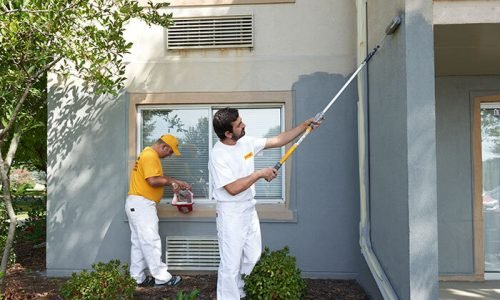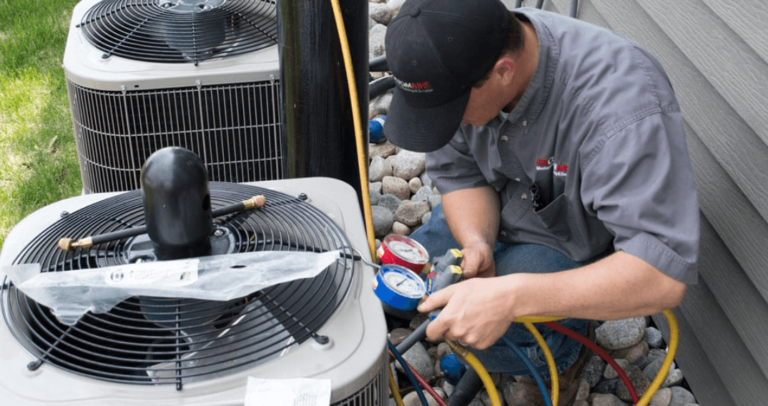When Is the Best Time for Exterior House Painting?
A well-painted exterior does more than just enhance a home’s curb appeal—it serves as a critical protective barrier against weather, moisture, and time. But choosing the right time to paint your home’s exterior is essential if you want to maximize both the beauty and longevity of the finish. While high-quality paint and skilled application matter, timing plays a pivotal role in ensuring the paint adheres properly and resists premature wear.
Whether you’re scheduling routine maintenance or planning a total refresh, understanding seasonal and environmental factors can help you determine the optimal window for exterior house painting. While there’s no one-size-fits-all answer, certain times of the year offer better conditions for the best results. Let’s explore the key considerations that go into choosing the ideal time for your next exterior painting project.
1. The Role of Temperature in Paint Performance
One of the most critical factors in exterior painting is temperature. Paint—especially water-based latex varieties—requires specific temperature ranges to dry and cure properly. If it’s too cold, the paint may not bind to the surface correctly, leading to cracking or peeling. If it’s too hot, it may dry too quickly, preventing a smooth finish and compromising durability.
For most paints, the ideal outdoor temperature range is between 50°F and 85°F. These moderate conditions allow for steady drying and strong adhesion. In areas like the Upper Midwest, where temperatures fluctuate significantly, it’s especially important to time your painting project during these mild periods to ensure quality results.
Professional painting contractors often plan their schedules around seasonal weather patterns to ensure they work within these temperature thresholds. They also monitor daily highs and lows to avoid issues caused by cold overnight temperatures that can affect curing.
See also: Exploring the World of Smart Homes: Are You Ready for the Future?
2. Humidity and Its Impact on Drying Time
Along with temperature, humidity plays a major role in exterior painting. High humidity levels slow down the evaporation of water in latex paints, leading to longer drying times. This can create surface imperfections, increase the risk of dirt or debris sticking to wet paint, and reduce overall durability.
Ideal humidity levels for painting are between 40% and 70%. When humidity is too low, paint can dry too fast, resulting in brush or roller marks and uneven application. Conversely, high humidity—common in summer mornings—can cause paint to stay tacky and not dry properly for hours.
Many professionals prefer to paint during mid-morning to mid-afternoon hours when the sun has dried morning dew and humidity has started to drop. In regions like Minneapolis, painters are accustomed to working around variable moisture conditions. That’s why interior painters often shift to interior work during humid seasons, reserving exterior painting for the driest, most consistent months.
3. Seasonal Advantages for Each Region
While spring through early fall is generally considered the best time for exterior painting, the specific timing can vary depending on geographic location. In northern regions like Minnesota, the ideal window typically falls between late May and early October, when temperatures are consistently warm and rain is less frequent.
Spring offers a fresh start after a long winter, but early spring can still bring unpredictable weather. Summer is often the busiest season for exterior painters, offering stable conditions and longer daylight hours. However, heat waves and humidity spikes during mid-summer can pose challenges.
Fall is an underrated time for painting—cooler temperatures and lower humidity can provide excellent conditions, especially in early to mid-autumn. As long as freezing temperatures are not imminent and precipitation is minimal, fall painting can be highly effective.
In contrast, winter is generally unsuitable for exterior painting in colder climates due to freezing temperatures and snow. Most professional painting contractors will not schedule outdoor work during winter months unless using specialized products designed for cold-weather application.
4. The Importance of Surface Conditions
Regardless of temperature and humidity, the condition of the surface being painted is crucial. Paint adheres best to dry, clean, and properly prepped surfaces. Rain, snow, and heavy dew can saturate siding and trim, making it difficult for paint to bond effectively.
Before beginning any painting project, surfaces should be free from moisture, mildew, dirt, and flaking paint. Most painters recommend allowing at least 24–48 hours of dry weather before starting exterior work to ensure the surface is completely dry.
In some cases, particularly after a rainy spell or in shady, north-facing areas of the home, surfaces may take longer to dry. This makes timing even more critical, as starting too soon can jeopardize the integrity of the paint job. Experienced painting contractors know how to assess and test moisture levels to determine readiness, ensuring a longer-lasting finish.
5. Scheduling Considerations and Contractor Availability
Another practical aspect of choosing the best time to paint your home’s exterior is contractor availability. The most reputable painting contractors often book weeks or even months in advance—especially during peak seasons. Homeowners who wait until late spring or early summer to begin planning may find that top-rated professionals are already fully scheduled through the season.
To secure your preferred painting company and ensure a timeline that works for your schedule, it’s wise to start consultations in early spring or even during the winter months. Many painters use the off-season to plan upcoming projects, provide estimates, and order materials in advance.
Additionally, early planning may allow you to take advantage of seasonal promotions or discounts, especially when contractors are looking to fill their calendars for the months ahead. While demand often dictates pricing, flexibility in scheduling can help you negotiate better rates or find open slots during less busy weeks.
6. Impact of Daylight Hours on Project Duration
Longer daylight hours during late spring and summer provide a significant advantage for exterior painting projects. More daylight allows painters to extend work hours, increase productivity, and complete projects in fewer days—minimizing disruption to your daily routine.
This is especially helpful for larger homes or properties requiring extensive prep work, multiple coats, or additional services like power washing, caulking, or siding repairs. Reduced daylight during fall and early spring can lengthen project timelines, as painters must adhere to shorter working windows.
Professional interior painters in Minneapolis, who may switch to exterior jobs during summer months, often structure their schedules to make the most of daylight, ensuring quality and efficiency without rushing the process. Timely project completion depends on both environmental conditions and how well those conditions align with contractor workflow.
Conclusion
The best time to paint the exterior of your home depends on several interrelated factors—temperature, humidity, surface conditions, and seasonal timing. While late spring through early fall generally offers the most reliable conditions, the ideal timing may vary slightly based on your regional climate and the specific requirements of your project. What matters most is ensuring that environmental conditions align with the paint’s drying needs and that the surface is properly prepared before application begins.
By planning ahead and working with experienced painting contractors who understand the intricacies of seasonal painting, homeowners can achieve a long-lasting, professional finish that not only looks stunning but also protects their home for years to come. Whether you’re scheduling an exterior refresh or shifting focus to interior painters for seasonal improvements, thoughtful timing is the foundation of a successful painting project.






